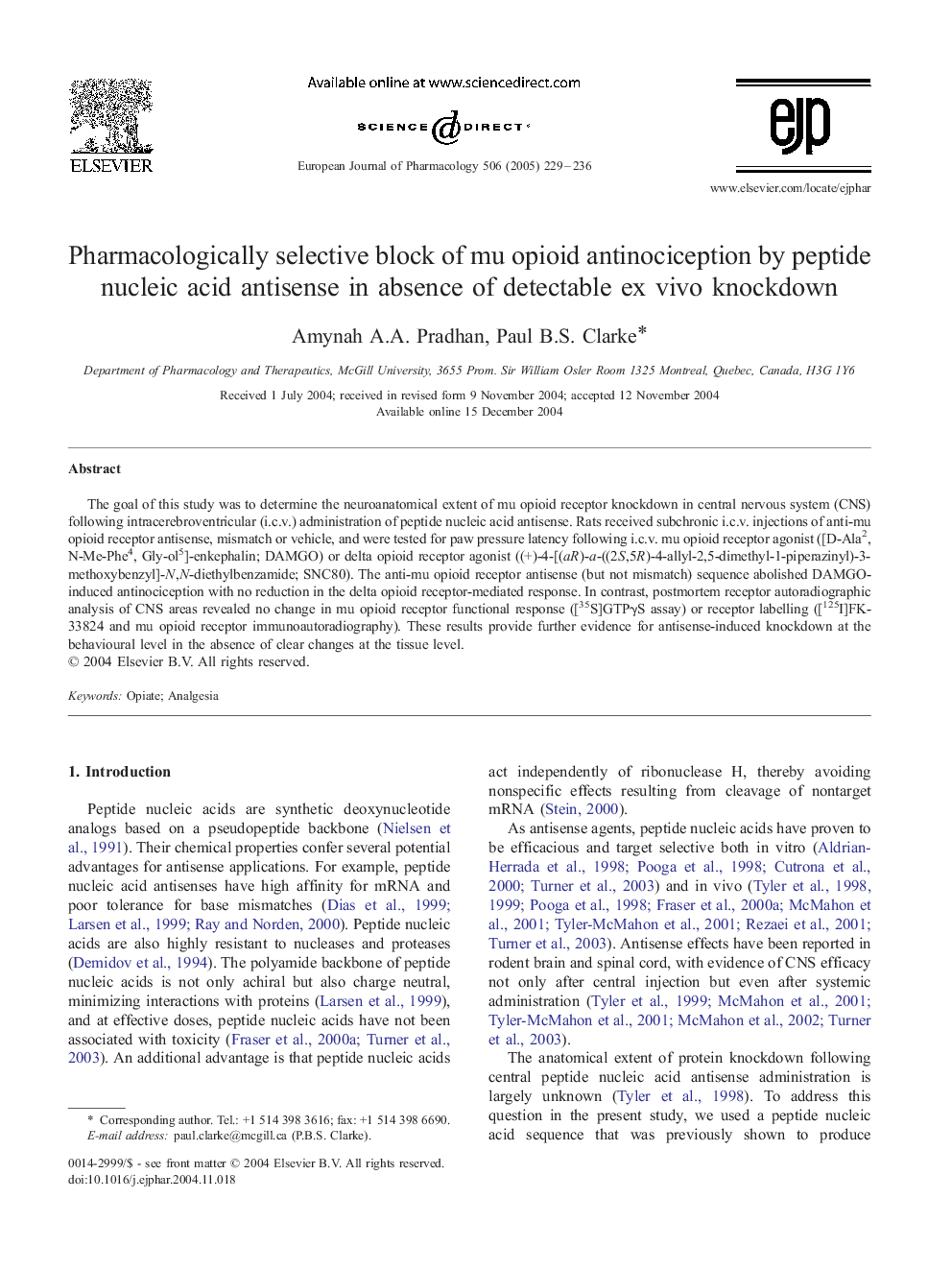| Article ID | Journal | Published Year | Pages | File Type |
|---|---|---|---|---|
| 9921592 | European Journal of Pharmacology | 2005 | 8 Pages |
Abstract
The goal of this study was to determine the neuroanatomical extent of mu opioid receptor knockdown in central nervous system (CNS) following intracerebroventricular (i.c.v.) administration of peptide nucleic acid antisense. Rats received subchronic i.c.v. injections of anti-mu opioid receptor antisense, mismatch or vehicle, and were tested for paw pressure latency following i.c.v. mu opioid receptor agonist ([D-Ala2, N-Me-Phe4, Gly-ol5]-enkephalin; DAMGO) or delta opioid receptor agonist ((+)-4-[(aR)-a-((2S,5R)-4-allyl-2,5-dimethyl-1-piperazinyl)-3-methoxybenzyl]-N,N-diethylbenzamide; SNC80). The anti-mu opioid receptor antisense (but not mismatch) sequence abolished DAMGO-induced antinociception with no reduction in the delta opioid receptor-mediated response. In contrast, postmortem receptor autoradiographic analysis of CNS areas revealed no change in mu opioid receptor functional response ([35S]GTPγS assay) or receptor labelling ([125I]FK-33824 and mu opioid receptor immunoautoradiography). These results provide further evidence for antisense-induced knockdown at the behavioural level in the absence of clear changes at the tissue level.
Related Topics
Life Sciences
Neuroscience
Cellular and Molecular Neuroscience
Authors
Amynah A.A. Pradhan, Paul B.S. Clarke,
